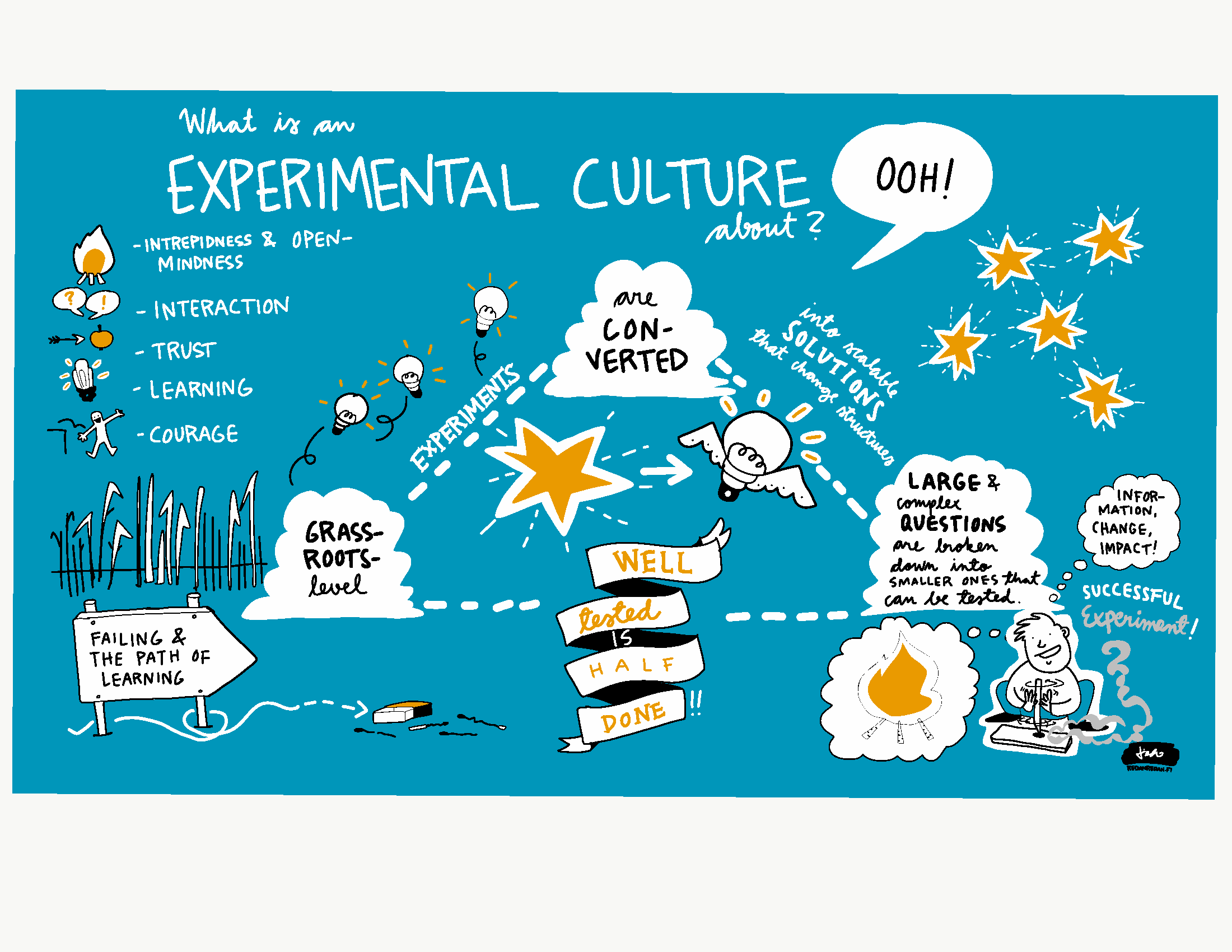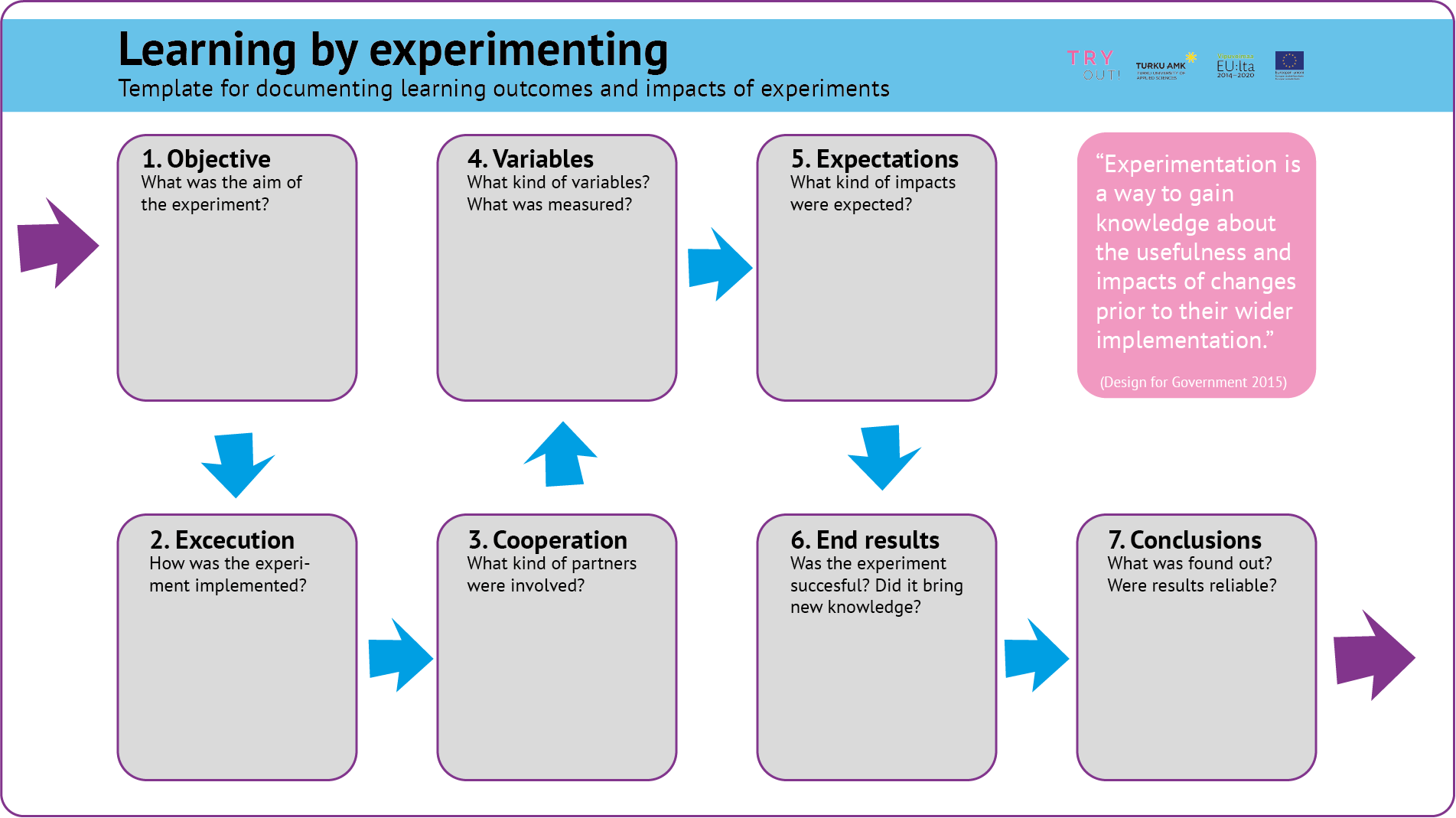How to learn by doing?

Experiments are valuable for generating new innovations in both companies and our society. The way forward from stagnation lies in open-minded and courageous experiments that get us from ideas into contact with reality as soon as possible. We have a strong planning culture in Finland which is not always ideal for generating fast solutions for the complex challenges we are facing today. But it is not enough to experiment just for the sake of experimenting. Experiments are converted into information, change and impact only through assessment of learning from the process.
In TRY OUT! project we have done numerous experiments in order to develop innovation platforms for testing new circular economy and cleantech business models. We have come to understand the importance of the assessment and documentation of all the learning taking place during the experiments. Actually the very first steering group meeting identified this as a crucial part of the project.
But how to harness the full learning potential of experiments to generate actual impacts? I participated in the InnoFrugal event that brought together world class frugal innovators from around the world to Helsinki in May 2018. The talk given there by Virve Hokkanen from Experimental Finland evoked many thoughts related to the topic of learning by experimenting.

Hokkanen gave us the following definition of experimentation taken from the Design for Government (2015) publication: “A way to gain knowledge about the usefulness and impacts of changes prior to their wider implementation”. Furthermore she highlighted how uncertainty and possibility for failure are always part of experimentation but it is the learning perspective that sets them apart from other random coincidences and trials.
So we are not alone with our intentions of maximising impacts from experiments by sharing our experiences and learning from them. When assessing experiments it is important to remember to document both the success and the failures that occurred during the process. In the same InnoFrugal event Roney Solomon from Ignitho reminded us how in innovation everything doesn’t have to lead to instant success and how failure is actually important component of innovation.
With all this in mind our TRY OUT! project has collected good practices from many different sources and come up with its own model of documentation process for experiments. The simple model has been tested by documenting all of the dozens of experiments done during the project. The aim of the documentation is to make learning visible. The documentation template has intentionally been made fairly simple to increase its usability in the agile experimentation process. Also this documentation template is under constant development as we learn more about assessing experiments by determinedly doing it ourselves. The template is freely available for all experimenters.
Let’s try out and learn from it!

Text: Sara Malve-Ahlroth, Project Advisor from Turku University of Applied Sciences
